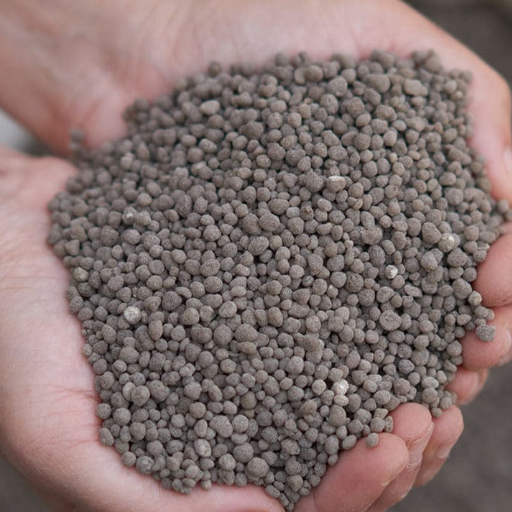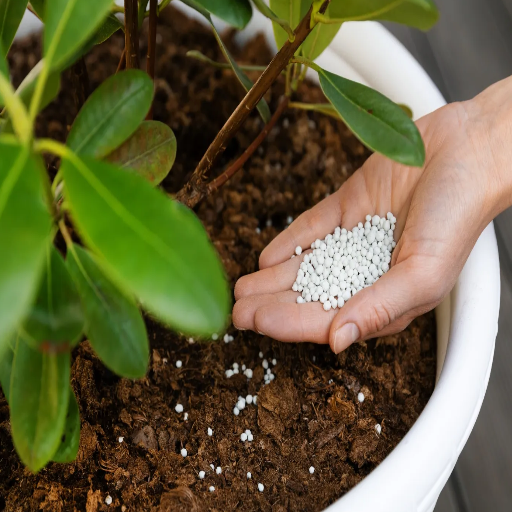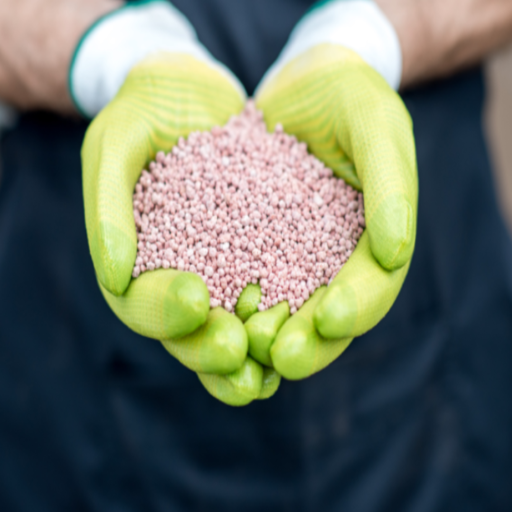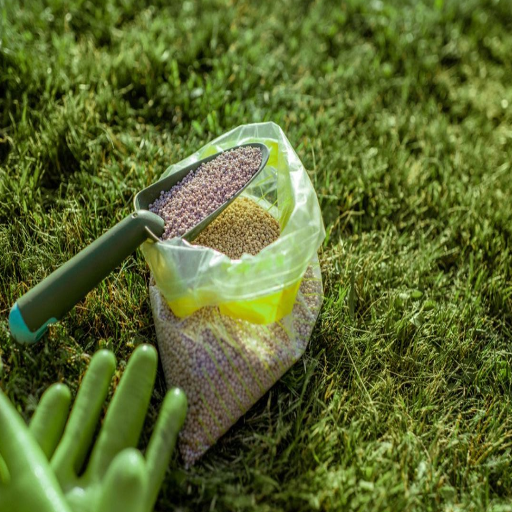Phosphorus is an essential nutrient that plays a critical role in plant development, influencing processes such as energy transfer, photosynthesis, and root formation. Whether you’re tending to a lush vegetable garden, cultivating flowering plants, or maintaining a healthy lawn, understanding the role of phosphorus and selecting the right fertilizer can make a significant difference in achieving optimal plant growth. But not all fertilizers are created equal, and knowing which ones are high in phosphorus is key to addressing your plants’ specific needs. This guide will provide a comprehensive overview of phosphorus-rich fertilizers, helping you make informed decisions to support healthy and vibrant plants while preventing nutrient imbalances.
The Role of Phosphorus in Plant Growth

Importance of Phosphorus for Root Development
It is said that phosphorus encourages the proliferation of strong and healthy root systems. Phosphorus is necessary in building DNA, RNA, and ATP, which are central to cell division and energy transfer in plants. Adequate levels of phosphorus enable plants to transfer more energy to root elongation, thereby fostering the establishment of an efficient and stable system for the uptake of nutrients and water.
Phosphorus deficiency results in weak or shortened root systems and presents more vulnerability to drought and nutrient deficiencies. Roots need phosphorus when they enter their early stages of growth deep into the soil, which increases the access to water reserves and essential minerals, especially in highly depleted conditions. Without phosphorus, plants would be competing with each other for firm anchorage, which can lead to poor growth of any kind.
For fruitful plant growth, phosphorus shall be made available in the most critical growth stages, in particular, germination and early seedling development phases. Fertilizers like monoammonium phosphate (MAP) and diammonium phosphate (DAP) provide phosphorus in the best possible way. It promotes root growth and renders plants’ ability to resist environmental stress to make a conducive environment for the growth of a healthy garden.
Phosphorus’ Contribution to Flowering and Fruit Production
Phosphorus is critical in flower and fruit formation, energy transfer, and intermediary metabolism in plants. In the reproductive phase of a plant’s life, phosphorus supplies the energy required for the development of good blooms and fruits. It mostly aids the formation of ATP (adenosine triphosphate), which provides energy for cellular activities such as building flowers, seeds, and fruit structures.
A good phosphorus supply during flowering will enhance the quality, size, and number of flowers. A lack of phosphorus, however, will cause poor flower formation and hence a loss in fruit-producing potential. Tomato, cucumber, and citrus crops require sufficient phosphorus during their fruiting periods to ensure the highest yields and quality of fruits in sweetness, size, and nutritional value.
Further fertilizer application at the critical crop growth stage would correct a possible deficiency of phosphorus in the soil. They may be applied preferably during the early reproductive stage to maximize their effect. Inappropriate soil testing and fertilizer application will have a negative effect on flowering and fruiting, depriving plants of the exact levels of phosphorus that they require.
Understanding Phosphorus Levels in Soil
Phosphorus is one of the very important macronutrients for plant growth and development. It is involved in energy transfer, root development, and the formation of flowers and seeds. Proper phosphorus concentration in soils is a key for plants, which would access this element for their metabolism. Any reduced availability of phosphorus in the soil could cause the plants to grow stunted, flower poorly, and bear little crop.
To maintain optimal phosphorus levels, soil testing is essential. Soil tests for phosphorus use Bray P1 or Olsen P, depending on the pH of the soil and local practices. These tests determine whether the soil contains adequate available phosphorus or whether more phosphorus needs to be added. The recommendation given then permits farmers to apply phosphorus fertilizers of their choice, such as rock phosphate or manufactured fertilizers like MAP and DAP, according to their needs.
Phosphorus availability depends on soil properties/factors such as pH, amount of organic matter, and microbial activity. Phosphorus has a tendency to become less soluble in highly acidic soils or in very alkaline soils. Phosphorus solubility is at a maximum; hence, adjusting the soil pH to 6.0-7.5 improves its uptake. Organic matter content and the establishment of favorable soil microbes can enhance the cycling of phosphorus in soils, which would release phosphorus in a free state for plant utilization.
Types of High Phosphorus Fertilizers

Organic High Phosphorus Fertilizers
The organic high phosphorus fertilizers are developed from natural materials, which are generally applied for increasing phosphorus content in soils while keeping the ecological balance. Bone meal is one of the most commonly used organic phosphorus sources. It is produced by treating animal bones either under steam or via roasting, drying, grinding them into either a fine or granular powder fertilizer with phosphorus and calcium contents. Bone meal contains about 12-16% phosphorus, which makes it very useful in the root development and flowering stages of plants. It is slow-acting and hence is most suitable for crops that need a gradual phosphorus supply over time.
Another fertilizer that is effective with phosphorus from organic sources is rock phosphate. Rock phosphate is a mineral obtained from phosphate rock deposits. It usually contains about 20-30% total phosphorus; however, most of it is in insoluble forms. The availability of rock phosphate can be enhanced by acidic soil or through phosphorus-solubilizing bacteria. These microbes help to break down the mineral so that phosphorus can be slowly released for absorption by plants. Due to its slow, almost-immediate mobility, rock phosphate is applied during soil preparation, well before crop establishment.
This composted manure, especially when sourced from animals fed on high-phosphorus diets, is an important organic phosphorus source. Phosphorus content is lower than what is typically found in bone meal or rock phosphate, but the presence of organic matter in the manure greatly enhances soil structure, water retention, and microbial activity in the soil. Poultry manure contains considerably higher levels of phosphorus when compared to other compost sources, such as cattle or sheep manure. Composting properly means nutrients are made available slowly, thus reducing the risk of nutrient leaching and making soil fertility management practices more sustainable.
Synthetic High Phosphorus Fertilizers
During synthetic high-phosphorus fertilization, fertilizers are integrated to address the targeted nutrient requirements of crops, particularly in critical growth stages such as root development and flowering. These fertilizers usually carry concentrated phosphorus compounds like monoammonium phosphate (MAP) and diammonium phosphate (DAP) so that plants can readily absorb phosphorus. These fertilizers, therefore, have been praised for the accuracy with which nutrients are made available since, under strict conditions, they are produced with nutrient availability in mind.
When applying synthetic phosphorus fertilizers, considerations must be made to prevent the environmental issues of phosphorus runoff into water bodies, subsequent eutrophication, and algal blooms. Studies have proved that good management practices (BMPs), especially those concerning the timing and placement of fertilizers, can reduce these possible adverse effects; for example, placing phosphorus fertilizer by banding it directly into the root zone or using slow-release formulations can not only augment PUE but also minimize environmental losses.
In addition, with developments in fertilizer technology, there are high-efficiency phosphate fertilizers (EEFs) designed to meet the demands of crop yield and sustainability. Usually, these formulations are combined with adsorbents or coated materials to slow down phosphate release, such that the availability of nutrients is in synchronization with the growth of plants to avoid waste. As precision agriculture improves, the use of sensor-based systems and data analytics in conjunction with phosphate fertilizer application methods will undoubtedly yield the best results in terms of fertilizer use optimization and long-term soil health.
Comparing Rock Phosphate and Triple Super Phosphate
Rock phosphate is a slow-release natural phosphorus source; therefore, it is ideal for long-term soil enrichment. On the other hand, triple superphosphate is a concentrated, fast-acting synthetic fertilizer used for immediate crop needs.
|
Aspect |
Rock Phosphate |
Triple Superphosphate |
|---|---|---|
|
Category |
Natural |
Processed |
|
Action Speed |
Gradual |
Rapid |
|
Phosphorus |
Minimal |
Concentrated |
|
Soil Type |
Neutral/Base |
Acidic/Neutral |
|
Expense |
Affordable |
Expensive |
|
Purpose |
Sustained |
Instant |
|
Eco Effect |
Gentle |
Moderate |
|
Method |
Broad |
Targeted |
Benefits of Using Phosphorus-Rich Fertilizers

Enhancing Plant Vigor and Health
Phosphorus-rich fertilizers are known to improve the vigor of the plants by directly affecting the development of roots, energy transfer, and other metabolic processes. Phosphorus is an indispensable macronutrient required for the building of nucleic acids, ATP, and membrane phospholipids. With a strong root system, the plant can better access nutrients and water in the environment, thereby providing a risk mitigation advantage against environmental stresses such as drought and temperature fluctuations. Being more of a nutrient with slow-release properties, phosphates from natural sources like rock phosphate, therefore, are of great importance in crops with longer-growing periods.
Phosphorus, additionally, promotes the blossoming, fruiting, and seed-setting phases. Crops with adequate amounts of phosphorus tend to mature earlier and are also uniform in yield; hence, it is a must-have nutrient for commercial farming. Consider triple superphosphate, which becomes handy when the demand for phosphorus is very high because of its very concentrated form of phosphorus that needs to be supplied into the soil to address the immediate needs of the crop. The phosphorus uptake-soil pH relationship is critical because acidic and neutral soils tend to provide better bioavailability of phosphorus so that plants efficiently utilize this element without posing environmental hazards in runoff and eventual eutrophication.
Lastly, the phosphorus fertilization should be optimally applied with careful precision about the exact needs of the areas, i.e., soil management, so that maximum benefit can be secured without harming sustainability. For instance, banding of P in a precise way enhances phosphorus use efficiency by placing the nutrient right in front of the roots so that the roots can absorb it. Integration of phosphorus fertilizers with other soil amendments, so they contain a balance of nutrients that can be deflected or neutralized by nitrogen and potassium, also leads to improved plant health and ultimate agricultural yield. Phosphorus-rich fertilizers remain at the very heart of modern agro-ecosystems worldwide through new techniques and improved formulations.
Improving Crop Yields with Phosphate Fertilizers
The phosphate fertilizers are best suited to maximizing crop yields to a maximum, whereas phosphorus is a macronutrient essential to the growth and development of plants. Phosphorus is crucial for a few biological processes, such as energy transfer through the formation of ATP, efficient photosynthesis, and the development of robust root systems. Recent improvements in fertilizer science are mainly focused on improvements in phosphorus use efficiency (PUE) such that a more significant measure of applied phosphorus is utilized by plants rather than being lost to leaching or fixed in soil.
Agronomic data show that site-specific application techniques will maximize the efficiency of phosphate fertilizers. Phosphorus applied at the right soil depths retains maximum availability, and runoff otherwise may carry away nutrients to cause the eutrophication of nearby water bodies. Polymer-coated phosphate fertilizers provide controlled release of nutrients and thus maximize uptake and minimize wastage.
Coupled with hour-by-hour soil testing and superior agronomic techniques for applying phosphate fertilizers, this ensures that phosphorus applied matches the particular nutrient demand of each load, thus driving up crop yields and promoting sustainable cultivation practices.
Balancing Nitrogen and Potassium with Phosphorus
The proper balance of nitrogen (N), potassium (K), and phosphorus (P) is key to good plant health and crop yield. These three macronutrients work in conjunction but have different roles: nitrogen sustains vegetative growth and is essential in chlorophyll production and protein synthesis; potassium helps support water uptake, enzyme activation, and resistance to stresses; and phosphorus pertains to energy transfer, root growth, and flowering.
The establishment of an optimum NPK ratio is dependent on factors like crop type, growth stage, and different soil conditions. In cereal crops, for instance, nitrogen is generally applied in greater amounts during the early stages of growth to promote the formation of leafy biomass, while potassium and phosphorus are applied later on for reproductive development and grain filling. Moreover, soil testing is instrumental in determining the pre-existing nutrient levels and accordingly supplementing deficient macronutrients. Moreover, advanced modeling techniques can estimate nutrient requirements for crops through the growing season by factoring variables such as rainfall, temperature, and soil porosity.
Applying nitrogen simultaneously with phosphorus can improve nitrogen use efficiency by as much as 20%; this translates into both economic and environmental benefits. In an analogous fashion, potassium chloride application during the active growth stages enhances the synergistic uptake of potassium with phosphorus, which further supports the vigorous metabolism of plants. Using these agronomical interventions as a basis, farmers may guarantee the balanced nutrient supply that promotes not only high metal agricultural output but also reduces long-term soil degradation with continued amendments to emerging scientific knowledge.
Challenges and Drawbacks of Phosphorus Fertilizers

Risks of Overuse and Soil Imbalances
Phosphorus fertilizers in large doses may cause grave problems from an environmental and agronomic standpoint. The continuous application on soils overloads them with phosphorus, thereby disturbing their natural nutrient environment while they undergo antagonistic interaction with other elements such as zinc, iron, and manganese. This overloading reduces the nutrients from becoming bioavailable and, in cases, alters the chemical composition, which further degrades the soils.
From an environmental perspective, the action of this surplus phosphorus in the surface runoff is to fertilize a nearby eutrophicated water body. Eutrophication favors the growth of toxic algal blooms, which depletes the dissolved oxygen level, disturbs aquatic life, and threatens biodiversity. Newer studies show phosphorus fertilizer overuse causes non-point pollution, adding to the global concern for water quality.
Nitrogen could leach into water systems, phosphorus could create harmful eutrophication in water bodies, and increased concentrations of nutrient wastes may cause disturbances to ecosystem geometry or numerically impact biodiversity. To address these, precision agricultural techniques have been introduced to tailor nutrient application rates and timing using advanced technologies. Soil testing, preparing integrated nutrient management plans, and possibly multinomial use of slow-release phosphorus could check overuse yet keep soil productive. These evidence-based practices dovetail with sustainable agricultural practices, as they will ensure that environmental damage is kept to a minimum and the soil is conserved for future farming systems.
Environmental Concerns: Runoff and Eutrophication
Runoff, constituting nutrients, namely nitrogen and phosphorus, remained an important environmental concern due to its potent eutrophication effects on aquatic ecosystems. With nutrient-rich runoffs entering water bodies, algal bloom occurs, precipitating oxygen depletion in water bodies and disturbance to aquatic life. It has been found that over 75% of phosphorus entering freshwaters is agriculture-related, marking another reason for the precision nutrient management modality.
There is evidence showing that innovative control methods, including vegetative buffer strips, constructed wetlands, and controlled drainage systems, reduce runoff and nutrient transport to downstream water bodies. Besides these, a digital tool powered by machine learning reinforces correct prediction of run-off events and integrates meteorological information with soil profiles, permitting the optimization of nutrient application schedules. Such developments foster interventions that prevent nutrient losses, supporting precision agricultural productions, thus sustainable environmental ethics.
Programmers should mandate incentives to integrate these technologies with farmer education about runoff and its ecological consequences so that a holistic approach is implemented. This integration of technology, science, and policies holds promise to fend off eutrophication and ensure sustained water ecosystems and biodiversity.
Identifying Phosphorus Deficiencies in Plants
Phosphorus is an indispensable nutrient model for plant growth, considered vital in transferring energy, photosynthesizing, and transporting nutrients with the plant system itself. Any phosphorus deficiency would negatively translate into plant development, reproductive yield, and general survival. Hence, it is anticipated that signs of phosphorus deficiency are identified to allow for corrective measures before any permanent loss in agriculture occurs.
Phosphorus-deficient plants commonly exhibit poor vegetative growth, dark or purplish foliage, and poor flowering or fruiting. These symptoms become evident due to the inability to satisfactorily produce adenosine triphosphate (ATP), thereby impeding growth-requiring-energy metabolic processes. Poor root elongation and lateral root formation, phases that already minimize the uptake of nutrients and water, are some processes reduced by phosphorus deficiency when occurring in the early stages of development.
Phosphorus deficiency occurrence is thus governed by environmental and soil factors such as low soil temperatures, waterlogged or high compaction conditions of soil, and perhaps an improper pH in the soil, which may lessen phosphorus solubility. Phosphorus availability can be derived from soil sample testing, whereas plant tissue analysis may provide inferential evidence of phosphorus uptake efficiency.
These are very advanced measures to treat phosphorus deficiencies, including precision fertilization or placement of phosphorus fertilizers near the root zone for efficient uptake. Another method enhancing phosphorus acquisition is the use of mycorrhizal fungi that extend the plant root system into the soil. Optimal phosphate concentration, maintained through such systems, also involves periodical monitoring and data analysis; thus, they help sustain crop production and soil health.
How to Choose the Right Phosphorus Fertilizer
Considerations Based on Soil Type and Plant Needs
Determining the correct phosphorus fertilizer is done by first studying soil type because it dictates the availability of phosphorus. For example, in an acidic soil, phosphorus tends to become tightly fixed and is thus less available to plants; hence, a fertilizer of high solubility, such as MAP or DAP, will be required. On the other hand, in an alkaline or calcareous soil, phosphorus may end its interaction with calcium to form an insoluble compound; therefore, fertilizers such as ammonium polyphosphate or phosphoric acid are often preferred, as they can keep phosphorus in a form that is more available. An all-inclusive soil test must be done prior to any decision to know the pH and nutrient deficiencies.
Equally important are the plant’s phosphorus requirements, which also vary by type of crop and stage of growth. I ensure that if a crop like maize, wheat, or rice demands a great deal of phosphorus, it gets applied in the early vegetative stage through fertilizers like triple superphosphate (TSP) or MAP to aid in root and shoot development. Fertilizers considered for legumes are those that harmonize with the ability of legumes to acquire nutrients through their interactions with soil microbes, applying fertilization very sparingly where it would create an imbalance. Monitoring phosphorus concentrations in plant tissue through the growth period further allows the fertilization plan to be adjusted dynamically for best nutrient use.
Application method and timing are taken into consideration in order to maximise phosphorus use efficiency according to the soil and plant requirements. Band placement near the root zone is one of the most effective delivery methods, owing to the fact that it limits the contact of phosphorus with soil particles, especially in phosphorus-fixing soils. Applications should be made during peak demand from plants – that is, either before planting or as the plant is developing- so that maximum nutrient uptake can occur. I use different precision agriculture tools such as GPS-guided applicators or variable rate technology and integrate all data from soil and tissue tests for effective customization of fertilizer strategy towards sustainability and productivity.
Understanding Fertilizer Labels for Proper Application
Fertilizer labels contain essential information guaranteeing its proper application and efficient nutrient delivery to plants. Agricultural professionals ought to consider various label details in making decisions congruent with the crop requirements, soil conditions, and environmental sustainability. The five key components usually found on fertilizer labels and their importance are listed below:
- N-P-K Ratio (Macronutrient Composition): This percentage-by-weight number refers to nitrogen in one, phosphorus in the second, and potassium in the third position. For instance, “10-20-10” stands for 10% nitrogen, 20% phosphorus (P2O5), and 10% potassium (K2O). Such ratios indicate how suitable a product may be at one stage of crop growth or another for deficiency needs.
- Micronutrient Content: Fertilizer labels may bear names of micronutrients, which are usually present in smaller quantities, such as iron (Fe), zinc (Zn), manganese (Mn), and copper (Cu). Though these elements exist in trace quantities, they actually play an important role in plant metabolism and in maintaining its energy.
- Application Instructions: These specify the rates of application, methods of application (whether by broadcast, banding, foliar, etc.), and time of application, preventing overapplication, leaching, or wasting of resources. Following best management practices is therefore ensured.
- Guaranteed Analysis: Manufacturers guarantee the detailed analysis of nutrient content. Some of the allowed minimum percentages of each nutrient are listed to ensure product quality and meet legal standards.
- Origin and Solubility Details: The information regarding the source of nutrients (such as urea, ammonium phosphate, or muriate of potash) and solubility is considered when users select products suitable for a specific irrigation system and soil type.
Analyzing all these constituents, the farmers customize fertilizer applications so that they serve both agronomic and environmental considerations, thus working efficiently and being sustainable.
Incorporating Eco-Friendly Practices in Fertilization
Applying fertilizers through green technologies is imperative to achieving sustainable agricultural systems while causing an environmental degradation. One of the best practices includes precision agriculture technology using advanced tools such as GPS mapping, soil sensors, and variable rate technology (VRT) to optimize fertilizer application, which prevents runoff and excessive nutrient loading of nearby water bodies.
Utilization of compost or other organic materials as fertilizers can improve soil health and decrease dependency on synthetics. Cover crops or crop rotation allow the natural cycling of nutrients to replenish critical elements such as nitrogen and phosphorus. Slow-release fertilizers or polymer-coated ones reduce leaching and promote the gradual availability of nutrients to plants.
The term fertigation refers to the fertilization of plants conveniently through irrigation, applying water-soluble fertilizers into the irrigation water for precise nutrient application to plants in the root zone, preventing wastage. In addition, real-time soil diagnostic tools and data-driven workflows are integrated into these practices to develop a system for sustainable fertilization.
Its practical application directly or indirectly relates to nutrient use efficiency (NUE) enhancement, the reduction of greenhouse gas (GHG) emissions from agricultural practices, maintenance of water quality, and ensuring economic production coupled with ecological conservation.
References
Frequently Asked Questions (FAQ)
Q: What fertilizer is high in phosphorus?
A: A high-phosphorus fertilizer contains a significant percentage of phosphorus, which is essential for plant nutrition. Triple super phosphate fertilizer (0-46-0) is a common example, providing a concentrated source of phosphorus for plants.
Q: Why is phosphorus important for plants?
A: Phosphorus is a vital nutrient that aids in energy transfer, photosynthesis, and root development. It promotes strong growth and flowering, making it crucial for various crops and garden beds.
Q: What are the different types of phosphorus fertilizers?
A: There are several types of phosphorus fertilizers, including chemical fertilizers like triple super phosphate, organic fertilizers such as bone meal and seaweed fertilizer, and liquid phosphorus fertilizers. Each type serves a unique purpose based on the specific needs of the plants.
Q: How do I know if my soil needs phosphorus?
A: Conducting a soil test is the best way to determine existing phosphorus levels in your soil. This test will help you understand whether you need to boost phosphorus through additional fertilizer applications.
Q: Can too much phosphorus harm plants?
A: Yes, excess fertilizer containing phosphorus can harm plants by causing nutrient imbalances. It can lead to reduced plant uptake of other essential nutrients and potentially impact the overall health of the garden.
Q: What are some organic sources of phosphorus?
A: Organic sources of phosphorus include bone meal fertilizer and certain types of seaweed fertilizer. These organic fertilizers provide a slow-release form of phosphorus that benefits long-term soil health.
Q: How does phosphorus interact with other nutrients?
A: Phosphorus works in combination with other nutrients like nitrogen and potassium to promote optimal plant growth. Understanding this interaction is important for formulating effective fertilizer needs.
Q: What is the best way to apply phosphorus fertilizers?
A: Phosphorus fertilizers can be applied in various forms, including granular and liquid fertilizers. The application method depends on the crop type and the specific needs of the plants, with some root vegetables benefiting from specific phosphorus applications.
Q: How can I boost phosphorus levels in my garden?
A: To boost phosphorus levels in your garden, you can apply high-phosphorus fertilizers such as triple super phosphate, bone meal, or liquid phosphorus fertilizers. Regular testing and monitoring of the pH level can also help maintain balanced nutrient levels.







